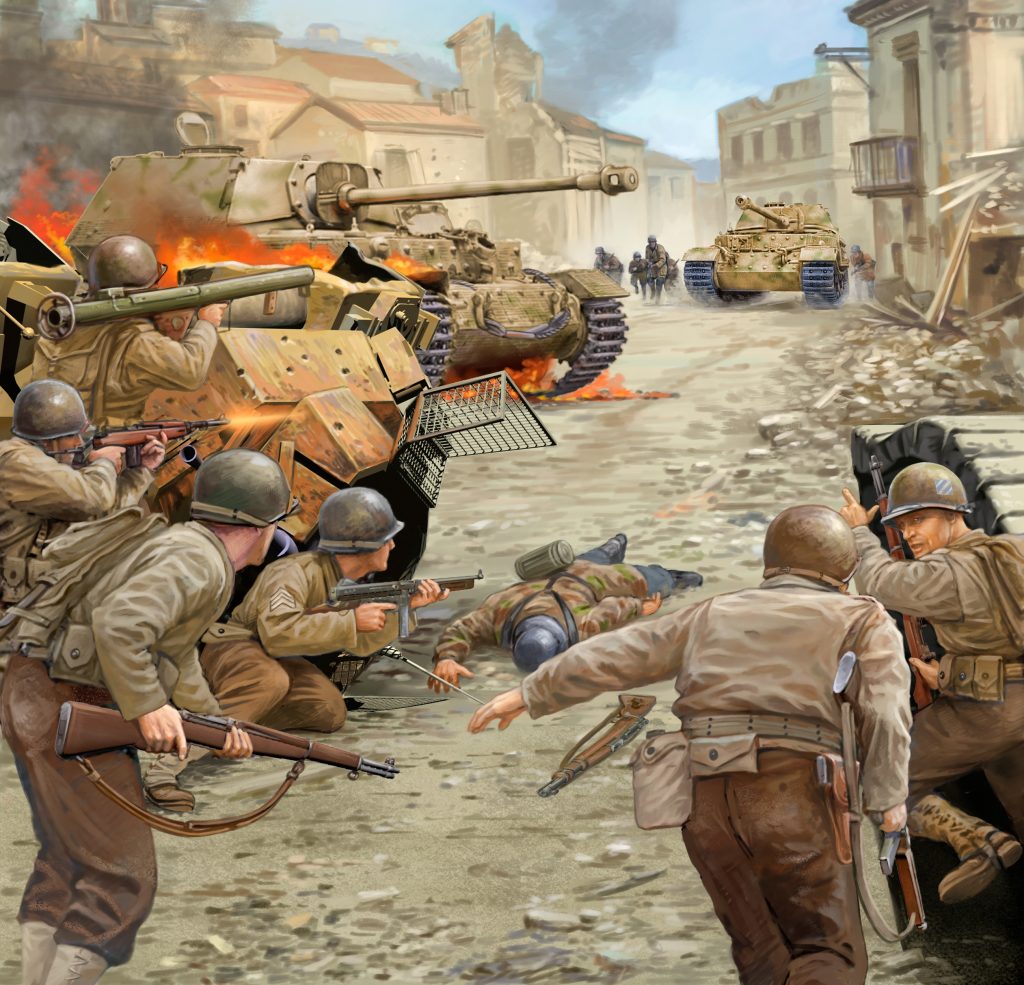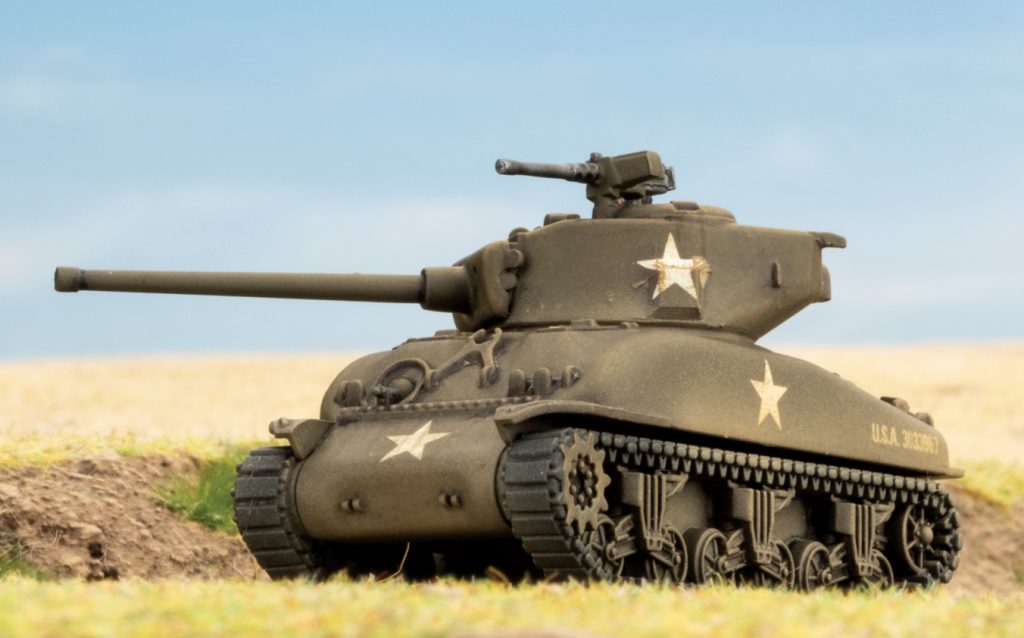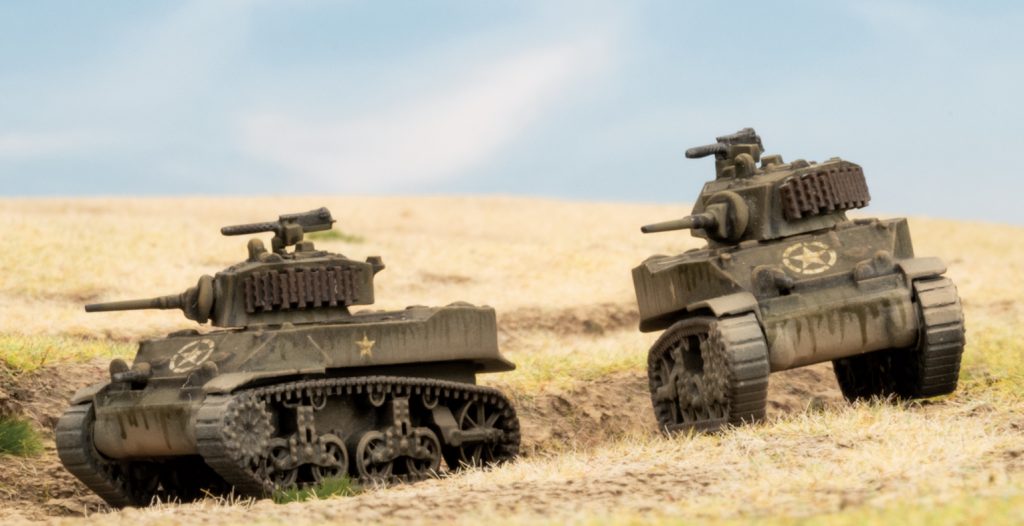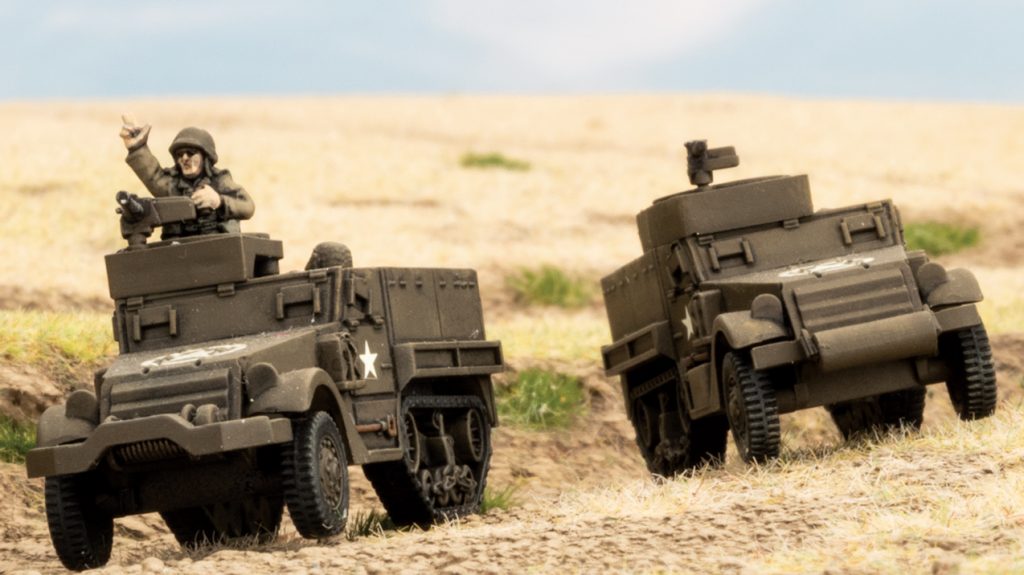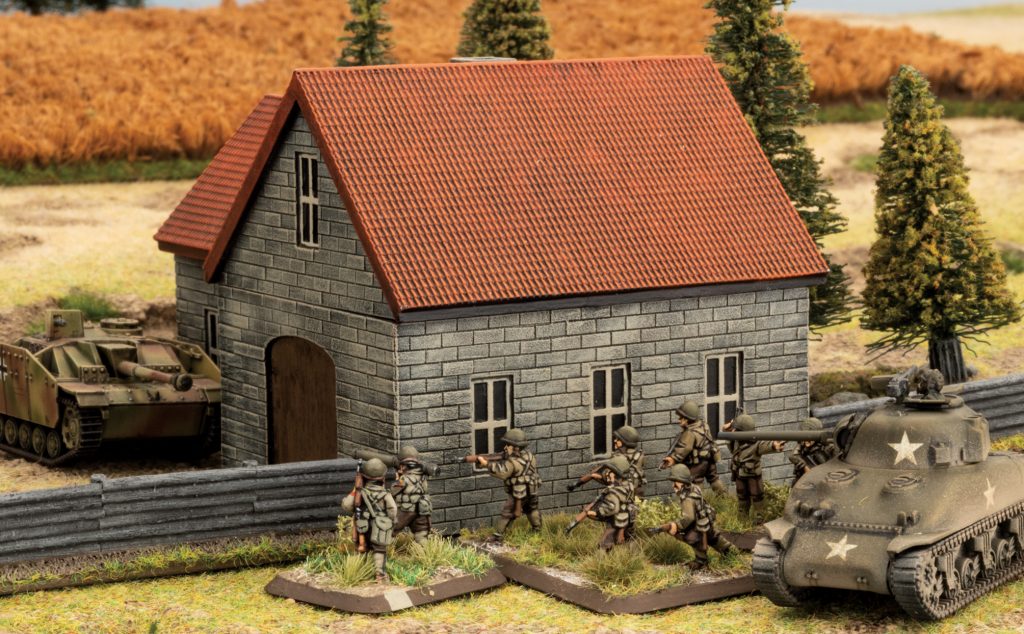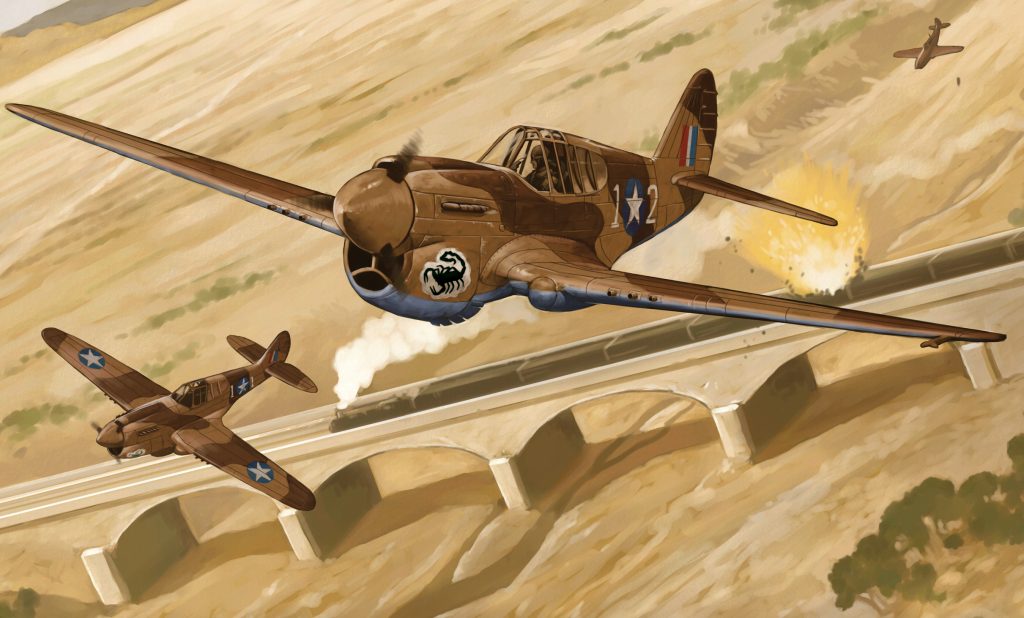with Phil Yates
The US Army focused on standardisation to enable it to fight a war on a far-away continent. At the beginning of 1944, they had one type of medium tank, one type of light tank, one armoured infantry organisation and one infantry organisation.
This makes it easy if you are planning to field an American force. Your most important decision is how to combine these standardised components to win your battles. Do you want to go tank-heavy, with just a little infantry support? Do you want to field a solid infantry force with a few tanks for backup? Or do you want to field a balanced mix with the right tool for every situation?
M4 Sherman Tank Company
- Uses same M4 Sherman tanks as Mid War, including the same T30 75mm assault guns and M3A1 armoured cars in the integrated support.
- Cost-effective medium tanks with integrated support. A full company of 17 tanks with a recon patrol and self-propelled mortars and artillery for just 70 points!
- Stabilisers for greater volume of fire on the move.
- Flexibility. Can swap out a platoon of M4 Shermans medium tanks for a platoon of M5 Stuart light tanks.
M5 Stuart Tank Company
- New upgraded M5 Stuart light tank. Just as fast as the Mid-War M3 Stuart, but better armour and not so reckless.
- Exceptionally fast, ideal for flanking manoeuvres.
- Cheap light tanks with the same integrated support as the M4 Sherman Tank Company.
- Flexibility. Can swap out a platoon of M5 Stuart light tanks for a platoon of M4 Shermans medium tanks.
Armoured Rifle Company
- Same organisation and equipment as Mid War, so easy to transfer across.
- Armoured M3 half-tracks for battlefield mobility, even under fire.
- A weapon for every occasion.
- Platoons have riflemen, light machine-guns, mortars, bazookas, and half-track-mounted machine-guns.
- Formation has integrated heavy machine-guns, mortars, anti-tank guns, and self-propelled artillery.
- Massed firepower overwhelms the enemy when attacking and shoots down any attack.
- Large, resilient platoons withstand a lot of enemy fire.
Rifle Company
- Same organisation and equipment as Mid War, so easy to transfer across.
- Cost-effective infantry with large, cheap platoons that can withstand a lot of enemy fire.
- Platoons can be further reinforced with extra bazookas and light and heavy machine-guns for more firepower.
- Formation has integrated heavy machine-guns, mortars, anti-tank guns, and self-propelled artillery.
- American riflemen manoeuvre quickly at dash speed.
M10 Tank Destroyer Company
- Same organisation and equipment as Mid War, so easy to transfer across.
- Massed self-propelled anti-tank guns, with up to 12 in a company.
- Integrated recon patrols for perfect initial deployment spearheading into No Man’s Land to flank enemy tank attacks.
- Use Seek, Strike, and Destroy doctrine to blitz into position and then scoot back out of sight after shooting up the enemy.
- As mobile as a medium tank, and almost as well armoured, but fewer machine-guns and no top armour, so stay away from enemy infantry.
Support
- Same organisation and equipment as Mid War, so easy to transfer across.
- Three batteries of towed 105mm or self-propelled M7 Priest artillery give American forces powerful artillery support on top of the integrated artillery in formations.
- Time on Target rule allows supporting artillery to make enemy infantry and guns re-roll successful saves for extra deadliness.
How Do the Americans Play?
The American forces in this book represent the fresh divisions pouring into Europe ready for the D-Day landings. They are well trained and eager for battle, although still lacking in actual combat experience to polish off the rough edges and teach them the difference between training and life-or-death battle. Most are rated as Confident, Trained, and Aggressive. Their eagerness shows in their ‘Blood and Guts’ approach to warfare which gives their tanks a better Last Stand rating and their infantry a better Rally rating.
American tanks have stabilisers, so they can fire as quickly on the move as at the halt (although not as accurately). On the other hand, they are not heavily armoured and mount mid-range guns, so need to use weight of numbers and clever manoeuvring rather than frontal firefights to defeat enemy tanks.
Their infantry have Garand semi-automatic rifles and BAR automatic rifles, as well as half-track-mounted weapons, and can fire just as well on the move as they can when halted. They are fast moving and have plenty of fire support. Let their support pound the enemy while the manoeuvre, then swamp the enemy in fire and roll over them from an unexpected direction.
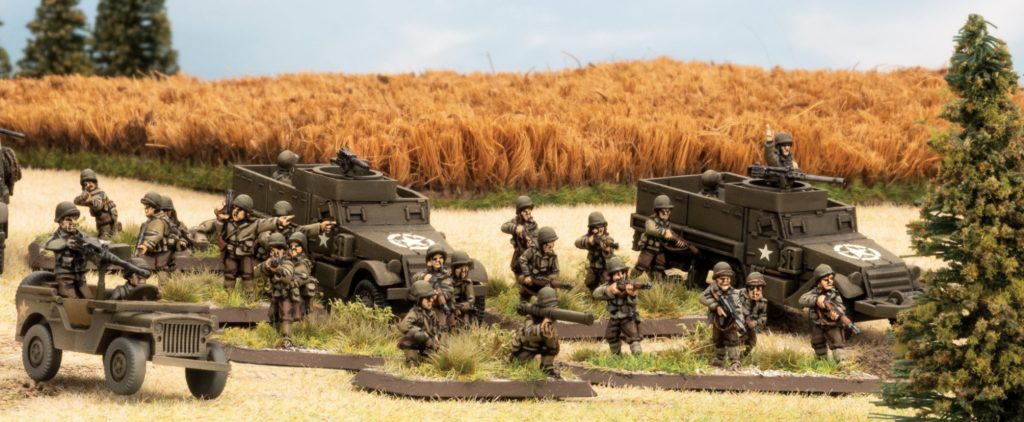
What to Expect in D-Day: American
Your Fortress Europe force will easily transfer to D-Day: American, gaining some useful new kit and skills in the process. Your tankers will appreciate upgunned M4 Shermans mounting 76mm and 105mm guns, and your infantry will find the new 57mm anti-tank gun an improvement over their old 37mm gun.
Some of your older equipment like the M3A1 armoured car and T30 self-propelled guns will be phased out, to be replaced with improved M8 armoured cars, M20 scout cars, and M8 Scott self-propelled guns.
D-Day Americans will also bring veteran American formations. These troops have been through the school of hard knocks. They’ve learned the hard way, so they aren’t as gung ho any more, but their tactics are much better.
There will be lots of totally new options for a whole new D-Day force as well.
As you’d expect these improvements come at a cost, and some players will elect to stick with what they have in Fortress Europe, preferring extra numbers over increased performance. Whichever way you go, your Fortress Europe force is a solid base for any future developments.

